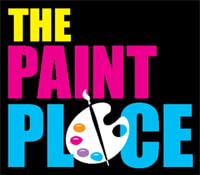As you may already know, colors have true, absolute values. Each color occupies a specific spot on the color wheel. While adding white, black, or gray to a color changes its tint, tone, or shade, the color’s basic value does not change. However, the experience of color is largely subjective. Two people may view the same color in different ways due to differences in their overall color vision as well as the subjective influence of mood. In addition, color context, or the makeup of colors that are next to each other, make a dramatic difference in how color is perceived. Here’s how.
Simultaneous Contrast
Simultaneous contrast is the technical name for the visual effect of the interaction of two colors. For example, when red and blue flowerbeds border each other, the red begins to look orange and the blue starts to appear green.
Simultaneous contrast is particularly strong between complementary colors. Recall that on the color wheel, complementary colors are those that sit exactly opposite from each other. These include red and green, yellow and purple, and orange and blue.
In painting, complementary colors are often used to highlight the shadows cast by an object of a particular color. Nearby objects may also be slightly tinted with the color used in the shadows. Although complementary colors are considered the most intense, it is also possible to employ the principles of simultaneous contrast in any color scheme.
Warm and Cool Colors
Mixing warm colors such as red, orange, and yellow, with cool colors such as blue, green, and purple can create interesting simultaneous contrast effects, even when the chosen colors are not opposites on the color wheel. This is a subtler way to introduce color context into your painting without creating a jarring effect.
There is no right way to use the concept of color context. Experimentation, both in your art and in everyday life, is a great tool for learning to harness this powerful tool of expression. Pay attention to how colors appear in nature, and the effects of various levels of sunlight, shadows, and cloud cover. Pay attention to how advertising uses color context to create different moods. Try color blocking various color combinations to see how each affects the other. Over time, you will develop an eye for the various ways that color context affects perception, and how you can best use context to take your artwork to a new evocative level.

